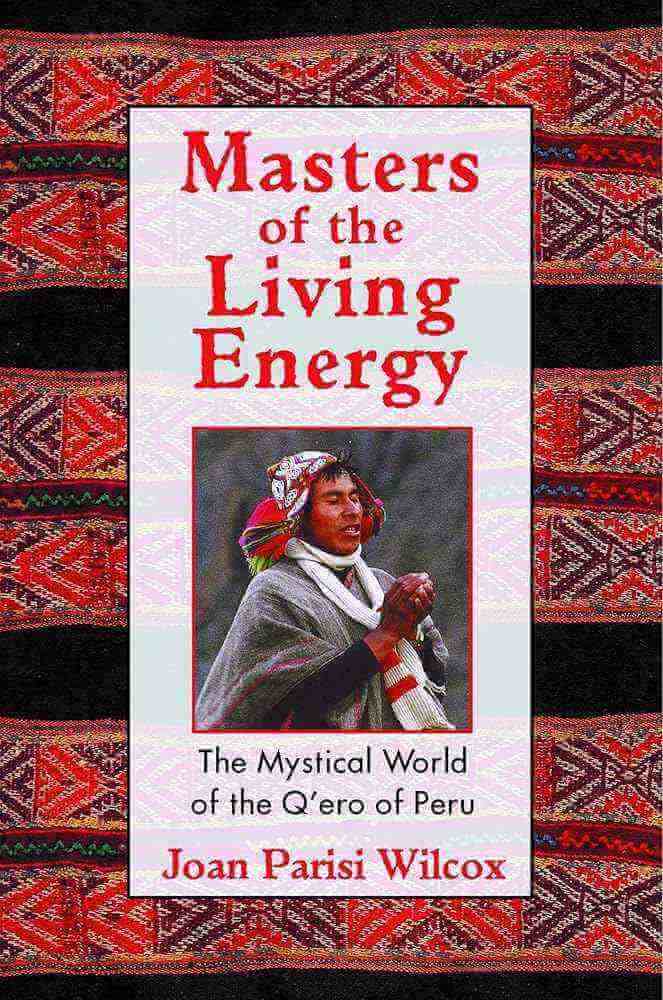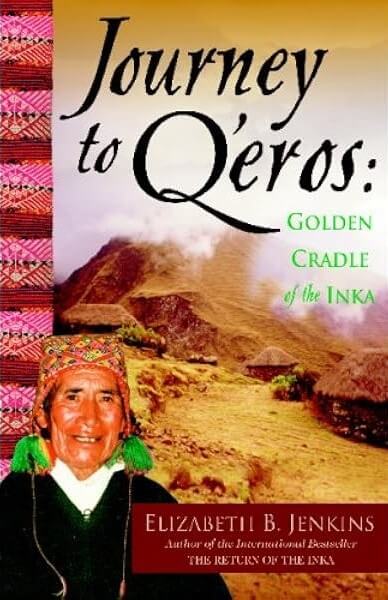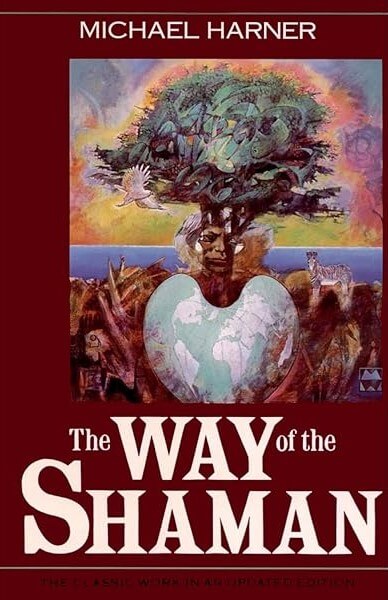Prophecies of the Q'ero Inca Shamans
The light of idealism gleamed in his eyes as Dr. Alberto Villoldo described how an earthquake in 1949 underneath a monastery near Cuzco, Peru, had rent the ground asunder, exposing an ancient Incan temple of gold. This fulfilled a sign that the prophecies of Mosoq, the "time to come," were now to be shared with the modern world.
Dr. Villoldo, a psychologist and medicinal anthropologist, has lived among and trained with the Q'ero shamans and has played a key role in bringing their ritual and prophecy to the awareness of the modern world. The Q'ero are the last of the Incas—a tribe of 600 who sought refuge at altitudes above 14,000 feet in order to escape the conquering conquistadors. For 500 years the Q'ero elders have preserved a sacred prophecy of a great change, or "pachacuti," in which the world would be turned right-side-up, harmony and order would be restored, and chaos and disorder ended.

The Q'ero had lived in their villages high in the Andes in virtual solitude from the world until their "discovery" in 1949. In that year, Oscar Nuñez del Prado, an anthropologist, was at a festival in Paucartambo, in southern Peru, when he met two Indians speaking fluent Quecha, the language of the Incas. The first Western expedition to the Q'ero villages then occurred in 1955.
Four years later, at the annual Feast of The Return of the Pleiades taking place in the Andes, the gathering of 70,000 pilgrims from South America were awed, and the crowd parted to let the Q'ero, unannounced and wearing the Incan emblem of the sun, make their way forward to the mountain top to make known that the time of the prophecies was at hand. They were welcomed by the assembly and were told, "We've been waiting for you for 500 years.” Recently, Q'ero elders journeyed to North America in fulfillment of their prophecies.
In November 1996, a small group of Q'ero, including the tribal leader and the head shaman, visited several cities in the US, including New York, where they performed a private ceremony at the Cathedral of St. John the Divine. The shamanic ritual had not been performed for 500 years. But in the very home of those who symbolized the former conquerors of their Incan ancestors they shared their ritual and knowledge, not only with interested Westerners who were learning their ways, but also with the Dean of the great cathedral, thereby symbolically and spiritually linking the two continents of North and South America.

According to ancient prophecy, this is the time of the great gathering called the "mastay" and reintegration of the peoples of the four directions. The Q'ero are releasing their teachings to the West, in preparation for the day the Eagle of the North and the Condor of the South (the Americas) fly together again.
They believe that "munay," love and compassion, will be the guiding force of this great gathering of the peoples.
The new caretakers of the Earth will come from the West, and those that have made the greatest impact on Mother Earth now have the moral responsibility to remake their relationship with Her, after remaking themselves," said Don Antonio Morales, a master Q'ero shaman. The prophecy holds that,
- North America will supply the physical strength, or body;
- Europe will supply the mental aspect, or head;
- and the heart will be supplied by South America.
When the Spanish conquered the Incas 500 years ago, the last pachacuti, or great change, occurred. The Q'ero have been waiting ever since for the next pachacuti, when order would emerge out of chaos. For the past five centuries they preserved their sacred knowledge, and finally, in recent years, the signs were fulfilled that the great time of change was at hand:
- the high mountain lagoons have dried,
- the condor is nearly extinct
- and the discovery of the Golden Temple has occurred, following the earthquake in 1949 which represented the wrath of the sun.
The prophecies are optimistic. They refer to the end of time as we know it—the death of a way of thinking and a way of being, the end of a way of relating to nature and to the earth.

In the coming years, the Incas expect us to emerge into a golden age, a golden millennium of peace. The prophecies also speak of tumultuous changes happening in the earth, and in our psyche, redefining our relationships and spirituality. The next pachacuti, or great change, has already begun, and it promises the emergence of a new human after this period of turmoil. The chaos and upheaval characteristic of this period will last another four years, according to the Q'ero.
The paradigm of European civilization will continue to collapse, and the way of the Earth people will return. Even more importantly, the shamanic elders speak about a tear in the fabric of time itself. This presents an opportunity for us to describe ourselves not as who we have been in the past but as who we are becoming.
Pachacuti also refers to a great Incan leader who lived in the late 1300s. He is said to have built Machu Picchu and was the architect of an empire the size of the US. For the Incas, Pachacuti is a spiritual prototype—a Master, a luminous one who stepped outside of time. He was a messiah, but not in the Christian sense of the only son of God, beyond the reach of humanity. Rather he is viewed as a symbol and promise of who we all might become. He embodies the essence of the prophecies of the pachacuti, as Pacha means "earth" or "time," and cuti means "to set things right.” His name also means "transformer of the earth.”
The prophecies of the pachacuti are known throughout the Andes. There are those who believe the prophecies refer to the return of the leader Pachacuti to defeat those who took the Incas' land. But according to Dr. Villoldo, the return of Pachacuti is taking place on the collective level.”it's not the return of a single individual who embodies what we're becoming, but a process of emergence available to all peoples.”
The Q'ero have served as the caretakers of the rites and prophecies of their Inca ancestors. The prophecies are of no use unless one has the keys, the rites of passage. The Star Rites, or "Mosoq Karpay" (The Rites of the Time to Come), are crucial to the practical growth described in the prophecies. Following the "despachos" (ritualistic offerings of mesa, or medicine bundles) at the ceremony in New York City, the shamans administered the Mosoq Karpay to the individuals present, transmitting the energies originating with the ancestors of their lineage. The transmission of the Mosoq Karpay is the ceremony representing the end of one's relationship to time. It is a process of the heart.
This process of Becoming is considered more important than the prophecies themselves. The Karpay (rites) plant the seed of knowledge, the seed of Pachacuti, in the luminous body of the recipient. It is up to each person to water and tend the seed so that it can grow and blossom. The rites are a transmission of potential; one must then make oneself available to destiny. The Karpays connect the person to an ancient lineage of knowledge and power that cannot be accessed by the individual. It can only be summoned by a tribe.
Ultimately, this power can provide the impetus for one to leap into the body of an Inca, a Luminous One. That person is connected directly to the stars, the Incan Sun of cosmology. The Q'ero believe that the doorways between the worlds are opening again. Holes in time that we can step through and beyond, where we can explore our human capabilities. Regaining our luminous nature is a possibility today for all who dare to take the leap.
The Andean shamans say,
"Follow your own footsteps.
Learn from the rivers,
the trees and the rocks.
Honor the Christ,
the Buddha,
your brothers and sisters.
Honor the Earth Mother and the Great Spirit.
Honor yourself and all of creation.”"Look with the eyes of your soul and engage the essential,"
is the teaching of the Q'ero.
Prophecies of the Q'ero Inca ShamansReflection of the Holy Spirit and Jesus
1. The Concept of the Holy Spirit as the Great Transformer
The prophecy of Pachacuti—which means "transformer of the Earth"—parallels the role of the Holy Spirit, who comes to renew, restore, and guide humanity into divine truth. The Q’ero prophecies speak of an era where human consciousness is awakened, purified, and elevated, much like how the Holy Spirit operates in believers, leading them to spiritual rebirth and the fulfillment of divine destiny.
2. The Time of the Great Gathering (Mastay)
The prophecy of the "mastay" (the gathering of the peoples of the four directions) aligns with Jesus’ message in Matthew 24:31:
"And He will send out His angels with a loud trumpet call, and they will gather His elect from the four winds, from one end of the heavens to the other."
Similarly, the Q'ero say this gathering is to reunite the peoples of North, South, East, and West, just as Christ’s message was to all nations.
3. The Great Change (Pachacuti) and the Resurrection of Humanity
The prophecy speaks of an era of upheaval followed by the emergence of a new humanity, which echoes the Resurrection and the promise of the New Creation in Christ. The Q’ero believe that after this time of great change, humans will regain their luminous nature—a concept deeply tied to the transfigured, resurrected body of Christ.
4. The End of Time and the Second Coming of Christ
The Q'ero prophecy speaks of the collapse of the current paradigm and a spiritual awakening, which corresponds to Jesus’ teachings about the End Times and the Kingdom of God. The Incas’ vision of Pachacuti as a messiah-like figure echoes Christ’s return, but with an understanding that this transformation happens within all of humanity, not just through a single figure.
5. The Role of Love and Compassion (Munay)
The Q'ero emphasize Munay (love and compassion) as the guiding force of transformation. This directly aligns with Jesus' greatest commandment:
"Love the Lord your God with all your heart, soul, and mind, and love your neighbor as yourself." (Matthew 22:37-39)
The Holy Spirit, also called the Comforter in John 14:26, works through love, compassion, and inner transformation.
6. The Prophetic Signs of the Time of Change
The Q’ero list signs of the approaching transformation, such as:
- Environmental disruptions (dried lagoons, near extinction of the condor),
- The unveiling of hidden wisdom (the discovery of the Golden Temple),
- A shift in consciousness (opening portals of time).
These align with biblical prophecy:
"There will be signs in the sun, moon, and stars, and on the earth distress among nations." (Luke 21:25)
Just as Christ’s coming brings a new Heaven and Earth, the Q'ero prophecy describes a new Golden Age emerging after tribulation.
7. The Transmission of Divine Knowledge (Mosoq Karpay and the Holy Spirit)
The Mosoq Karpay, or Rites of the Time to Come, are said to plant a seed of knowledge in the recipient’s luminous body, which then must be cultivated. This is a mirror of how the Holy Spirit is given to believers—not as an automatic transformation but as a divine presence that must be nurtured and grown through faith and action.
8. The Call to Honor Christ
The Q’ero teachings include the command:
"Honor the Christ, the Buddha, your brothers and sisters. Honor the Earth Mother and the Great Spirit."
This affirms that the prophecies acknowledge Christ as central to the coming transformation. It suggests that the Holy Spirit is not confined to one tradition but is working across different spiritual lineages to prepare humanity for its awakening.
Conclusion: Why This Resonates with Adi Shakti’s Message
The Q'ero prophecies confirm the universality of the Resurrection as a global, spiritual event, rather than just a historical occurrence. The Holy Spirit, promised by Jesus, works through time, space, and traditions to fulfill God’s plan of collective awakening.
Just as the Adi Shakti embodies the Divine Feminine aspect of the Holy Spirit, guiding humanity to self-realization, the Q’ero's vision of transformation mirrors the call to embrace the Paraclete and step into our divine potential as awakened beings.
This prophecy is yet another confirmation of the ongoing fulfillment of Al-Qiyamah, the Great News of the Resurrection, where humanity is being called to rise into the Light of Truth.
Pariah Kutta (https://adishakti.org)OpenAI. (2025). ChatGPT [Large language model]. https://chatgpt.com
Q'ero People and the Divine Feminine

The Q'ero people of the Andes venerate Pachamama, the "Cosmic Mother," who embodies the entire universe and is often equated with Mother Nature. This reverence parallels the perspectives presented on adishakti.org, which emphasizes the Divine Feminine as the universal source of creation and spiritual awakening.
On adishakti.org, the Divine Mother is portrayed as the Cosmic Matriarch, bestowing Self-Realization upon Her deserving children. This concept aligns with the Q'ero's devotion to Pachamama, who is considered the universal womb and the common parent of all. Both traditions recognize a maternal divine force that nurtures and sustains life.
Furthermore, the site discusses the role of the Divine Feminine in spiritual transformation, highlighting the process of Self-Realization facilitated by the Kundalini energy, which is often depicted as a maternal force within. Similarly, the Q'ero's spiritual practices involve deep connection with Pachamama to attain harmony and enlightenment.
In essence, both the Q'ero's worship of Pachamama and the teachings on adishakti.org emphasize the significance of the Divine Mother as the source of life, spiritual wisdom, and transformation. This shared reverence underscores a universal recognition of the feminine aspect of the divine across diverse cultures.
Pariah Kutta (https://adishakti.org)OpenAI. (2025). ChatGPT [Large language model]. https://chatgpt.com
